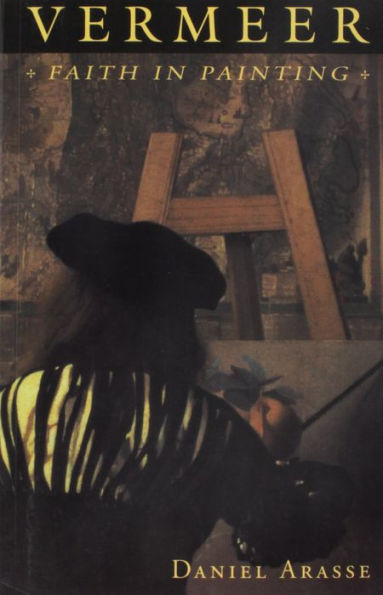Vermeer: Faith in Painting
Through a historical analysis of Vermeer's method of production and a close reading of his art, Daniel Arasse explores the originality of this artist in the context of seventeenth-century Dutch painting. Arguing that Vermeer was not a painter in the conventional, commercial sense of his Dutch colleagues, Arasse suggests that his confrontation with painting represented a very personal and ambitious effort to define a new pictorial practice within the classical tradition of his art. By examining Vermeer's approach to image-making, the author finds that his works demonstrate the concept of painting as a medium through which the viewer senses the ungraspable and mysterious presence of life. Not only does this concept of painting carry on the traditions of Classical Antiquity and the High Renaissance, but it also relates to Catholic ideas about spiritual meditation and the power of images.
Arasse shows that although Vermeer usually uses secular subject matter commonplace among his contemporaries, his treatment of iconography, light, and line, for example, varies greatly from theirs. Iconographical elements tend to hold meaning in suspense rather than to explicate; dazzling light emanates from interior objects; sfumato renders the presence of objects without depicting them. Discussing these and other aspects of Vermeer's art, Arasse locates the painter's genius in the reflexive, meditative nature of his works, each of which seems to be a painting about painting.
1119055937
Arasse shows that although Vermeer usually uses secular subject matter commonplace among his contemporaries, his treatment of iconography, light, and line, for example, varies greatly from theirs. Iconographical elements tend to hold meaning in suspense rather than to explicate; dazzling light emanates from interior objects; sfumato renders the presence of objects without depicting them. Discussing these and other aspects of Vermeer's art, Arasse locates the painter's genius in the reflexive, meditative nature of his works, each of which seems to be a painting about painting.
Vermeer: Faith in Painting
Through a historical analysis of Vermeer's method of production and a close reading of his art, Daniel Arasse explores the originality of this artist in the context of seventeenth-century Dutch painting. Arguing that Vermeer was not a painter in the conventional, commercial sense of his Dutch colleagues, Arasse suggests that his confrontation with painting represented a very personal and ambitious effort to define a new pictorial practice within the classical tradition of his art. By examining Vermeer's approach to image-making, the author finds that his works demonstrate the concept of painting as a medium through which the viewer senses the ungraspable and mysterious presence of life. Not only does this concept of painting carry on the traditions of Classical Antiquity and the High Renaissance, but it also relates to Catholic ideas about spiritual meditation and the power of images.
Arasse shows that although Vermeer usually uses secular subject matter commonplace among his contemporaries, his treatment of iconography, light, and line, for example, varies greatly from theirs. Iconographical elements tend to hold meaning in suspense rather than to explicate; dazzling light emanates from interior objects; sfumato renders the presence of objects without depicting them. Discussing these and other aspects of Vermeer's art, Arasse locates the painter's genius in the reflexive, meditative nature of his works, each of which seems to be a painting about painting.
Arasse shows that although Vermeer usually uses secular subject matter commonplace among his contemporaries, his treatment of iconography, light, and line, for example, varies greatly from theirs. Iconographical elements tend to hold meaning in suspense rather than to explicate; dazzling light emanates from interior objects; sfumato renders the presence of objects without depicting them. Discussing these and other aspects of Vermeer's art, Arasse locates the painter's genius in the reflexive, meditative nature of his works, each of which seems to be a painting about painting.
65.0
In Stock
5
1

Vermeer: Faith in Painting
208
Vermeer: Faith in Painting
208Paperback(REPRINT)
$65.00
65.0
In Stock

Product Details
| ISBN-13: | 9780691029306 |
|---|---|
| Publisher: | Princeton University Press |
| Publication date: | 10/20/1996 |
| Edition description: | REPRINT |
| Pages: | 208 |
| Product dimensions: | 7.75(w) x 10.00(h) x (d) |
About the Author
From the B&N Reads Blog
